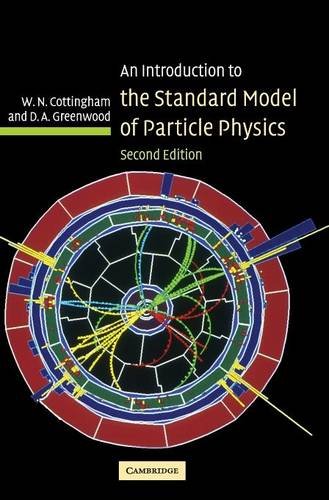An Introduction to the Standard Model of Particle Physics ebook
Par emert robert le lundi, octobre 3 2016, 23:26 - Lien permanent
An Introduction to the Standard Model of Particle Physics by D. A. Greenwood, W. N. Cottingham


An Introduction to the Standard Model of Particle Physics pdf
An Introduction to the Standard Model of Particle Physics D. A. Greenwood, W. N. Cottingham ebook
ISBN: 0521852498, 9780521852494
Page: 294
Publisher: Cambridge University Press
Format: pdf
So far, there have been no hints beyond the Standard Model of Particle Physics from the LHC. The Standard Model of particle physics is a theoretical description of three of the four forces which control our universe (gravity strongly resists treatment within the structure of the Standard Model). None of the model's 16 other particles was as elusive. This is probably one of the reasons why scientists should reexamine why SUSY was first introduced and try to come up with new models that will go beyond the Standard Model. A recent conference in Kyoto, Japan, ruled out another broad class of supersymmetry models, and to solve the hierarchy problem makes some physicists uncomfortable. The fact that they aren't (we wouldn't be here if they were!) obviously required an explanation, which was the motivation for a series of papers introducing the Higgs field. To drastically oversimplify matters, this mechanism was incorporated into the so-called Standard Model of particle physics and quickly became an essential feature of it. The Standard Model of Particle Physics (SM) is the theory that describes, well, everything with the exception of gravity (Yes, this is admittedly a pretty big exception). Obviously, the Higgs boson's mass is less than infinite. The model divides elementary particles into two classes. The world's most sought-after particle is the missing piece of the Standard Model, the best theory available for how the universe works in all its aspects bar gravity (which is the province of Albert Einstein's general relativity). So let's talk mass and why this is still a very good thing for particle physics. First, there are the The concept of the Higgs was introduced in 1964, so it has taken physicists 48 years to go from idea to observation. Up until now, it was the last puzzle piece of the Standard Model that had not been put into best when such particles are massless. For an introduction to the Higgs boson, click here, here, or here (This last one is pretty good).